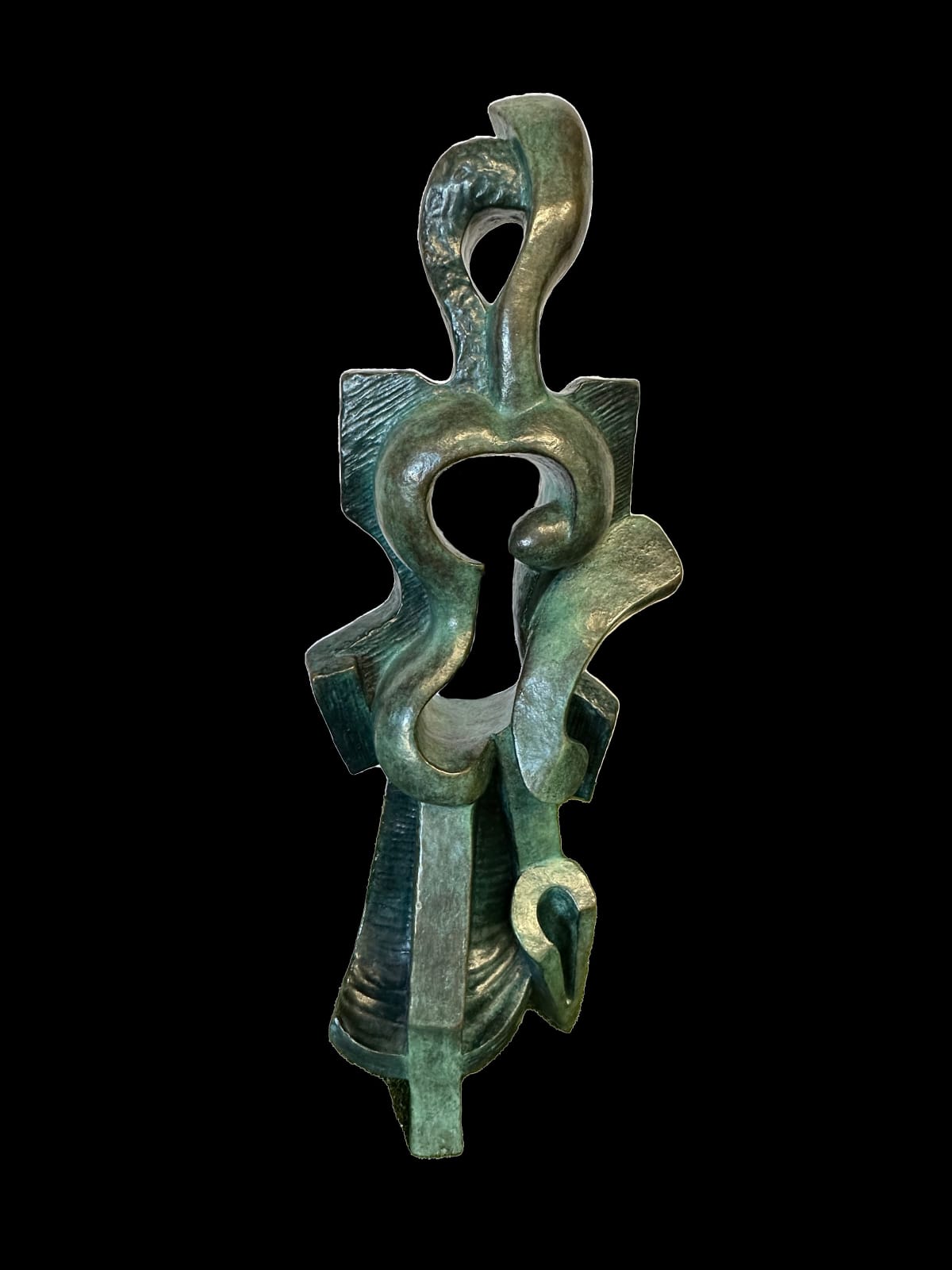Alexander Archipenko Ukrainian-American, 1887-1964
Later cast 1968
Ed 6/8
height 67.3 cm
Conceived in 1912, Alexander Archipenko’s Walking strode into art history a year prior to Umberto Boccioni’s landmark Forme uniche della continuità nello spazio (Unique Forms of Continuity in Space). As noted by George Heard Hamilton, in Archipenko’s sculpture “the sculptural reality of the interior forms is made doubly clear by the empty space which stand for the head and body. [Walking] is the first instance in modern sculpture of the use of a hole to signify more than a void, in fact the opposite of a void, because by recalling the original volume the hole acquires a shape and structure of its own".
The sculpture dates from a time of particular artistic creativity for Archipenko when he resided in France from 1909-1920. During this time the interest in Cubism reached its frenetic heights. This particular work, despite its size, has a more simplified and symbolic style. Around this time, as painters and sculptors looked for new ways to make art and break with Impressionist, they referred to African art in the form of tribal masks and sculptures, absorbing these forms into their own work. According to Katherine Janszky Michaelson:
“In their search for alternatives to Impressionism, painters and sculptors alike employed these “primitive sources” to arrive at the new vocabulary of clear massive forms that became the point of departure for cubism. With a new emphasis on formal and structural problems...subject matter began to lose the importance it had in the nineteenth century, as is demonstrated by the many generically titled works by Archipenko and others.”
In other words, we can view Archipenko’s Walking as a formal exercise, an exploration of how to conceive a figure in space in new ways. Archipenko succeeded, carving out the void at the center to form the body and face of his woman, the textured interlinking surfaces around her creating a sense of the space around her, putting her into motion as if the air around her moves as she walks. It is an energetic and original specimen from a particularly innovative period for both Archipenko and art history.



